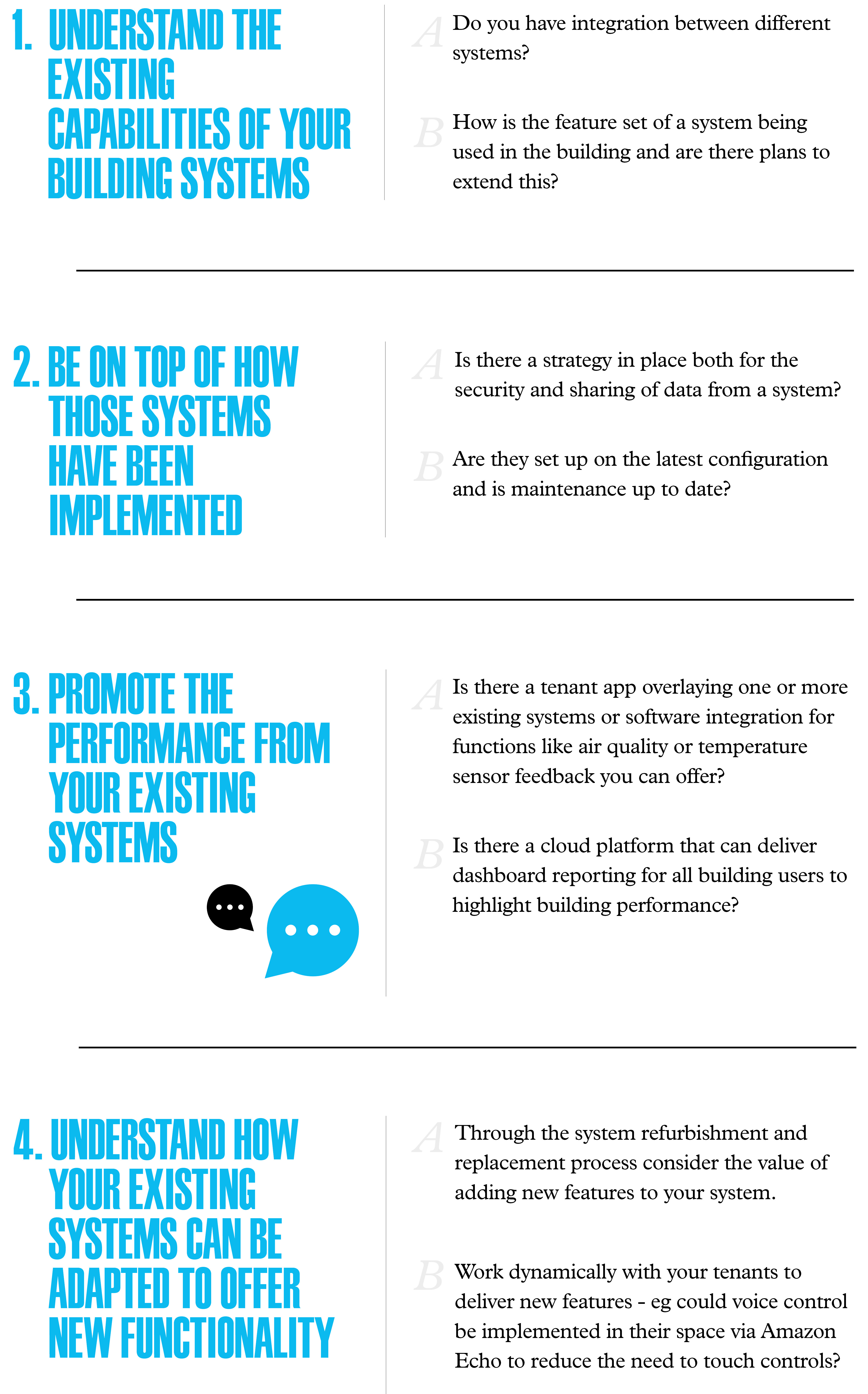Building continuity and the race to smart
Posted:
6 / 4 / 2020
Tagged:

The notion of smart buildings has accelerated throughout this decade and will do so even more with the impact of COVID-19.
Commercial landlords have taken the responsibility of helping their tenants return to their offices with a rapid change in how buildings function. By focusing on implementing technology and data-led approaches, landlords are giving their tenants a greater sense of safety in how they can interact with the building once back in the office.
This notion of safety can be delivered in two forms; with an openness to sharing data and by the changes in how buildings physically operate. By focusing on the outcome, a smart building must be able to deliver user experience gains to tenants, property managers, and building operations teams to continue to drive value. This is all underpinned by technology, and the right use of it can drive value to all parties.
Which is why the likes of Edge Technologies are pioneering the way, setting clear visions to what a new smart building can achieve. However, not all buildings have to have the same capabilities as the Edge. Most of today’s buildings have the potential to become smarter and prepare for their tenants to return to the office through small tweaks and adjustments, without the need for extensive and expensive, time-consuming refurbishments.
Which takes us back to data
The UK government has already set expectations for businesses to share their post COVID-19 risk assessments with their employees. And this can be supplemented with a whole host of other information, be that from the existing systems in the building or by the rapid installation of sensors or other technologies that leverage the landlord’s current network infrastructure (all of which is made all the easier if the landlord operates a Wi-Fi network in the building).
Examples of what can be shared are wellbeing measures such as air quality, as well as productivity gains such as common area occupancy data. The key to success here is disseminating this data in a meaningful way to the tenants and sharing this information effectively, whether that’s via dedicated web pages or a tenant app. By having access to this type of information, tenants can define and qualify the insight they require for contingency planning for their return back to the office.
The real estate sector itself has also started to change, as can be seen in the BCO Guide to Specification 2019 edition. This contains more extensive best practice guidance on both the air quality requirements as well as humidity and noise level limits that can guide landlords to discover what might soon become the norm.
Now is also a great opportunity to highlight the work landlords and developers have undertaken in these areas to promote the environment that workers will be in. This requires closing the loop by measuring the quality that the design of a building is delivering – namely sensors. These types of sensors are devices that sit on the edge of the telecommunications network, such as a laptop would in an office, so as long as there is a network to attach to, sensor installation can be very quick.
We at WiredScore have long promoted the notion of landlords delivering connectivity as a service to their tenants, whether that’s via public common area Wi-Fi, in-building mobile services or coordination with fibre providers for tenants to get connected seamlessly. To date, there has always been a divide in responsibility for connectivity between what resides in the landlord demise and that of the tenant. However, options are starting to appear that will enable landlords to have independent wireless networks within buildings for sensors that require no additional infrastructure in the tenant demise.
5G & Private LTE
5G promises to bring additional capacity to mobile networks, supporting thousands more devices, and enabling a new wave of sensors that could be supported within a building. 5G also requires less power to transmit so will extend the battery life of sensors.
Nevertheless, 5G is still in the roll-out stage and there will inevitably be problems with in-building coverage unless a proactive approach is taken by all involved stakeholders. However, an alternative is already available for landlords to increase their mobile network capabilities.
In certain geographies, the idea of private mobile networks (e.g. CBRS in the USA and Private LTE in the UK) are gaining traction. Private mobile networks allow building owners to actually run their own mobile network within a building.
Currently, there are complications with this technology, but it does offer the option for sensors to be connected wirelessly within a building by utilising a common network throughout the building. This one network could then be used to support a wide range of sensors that could be rapidly installed in tenant and common spaces and be immediately linked back into the core reporting systems of the building and tenants.
Considerations for landlords
The move back to the office will require a change in how buildings operate, but it will also be an opportunity for landlords to deliver enhanced services to their tenants via smart functionality.
We believe a smart building can be defined by reviewing these four key foundational attributes:

We are seeing forward-looking landlords across the country starting to prepare their buildings for when their tenants return to work by enhancing the existing features of their buildings.
If your building has been Wired Certified, then this is a great opportunity for you to earn extra Innovation Credits and potentially increase your score for the work you are doing in preparing your building for tenants return to work.
Speak to your Customer Success or Partnerships Manager for more information.
#ConnectivityMatters